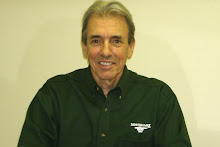
The Sanibel Comprehensive Land Use Plan is a groundbreaking document. The City of Sanibel has been successful in preserving its unique character and beauty thanks to our “founding fathers and mothers” and the plan they developed back in the 1970’s and have improved upon since then. We’ve been given the plan some scrutiny and we’ve realized that portions of it actually discourage certain beneficial activities. These portions of the code, especially in a “unified cluster development”, can be roadblocks to concepts and technologies that can have great benefit to our island and the conservation of it’s resources:
New Section 126-855: While the intention of the CLUP is to limit development on building sites on Sanibel, the definition of “developed area” is limited to portions of the property that is covered by impermeable structures as well as “used” by permeable areas (i.e. walkways, permeable driveways, etc.) In fact the vast majority of areas on most parcels is subject to construction activity to accommodate vegetation relocations, landscaping arrangements, water retention and drainage systems.
Cisterns, for example, are part of a mechanical system that conserves water, for potable or non-potable uses, and enhances the drainage and water retention function of the property. Their coverage area should not be calculated as part of the developed coverage anymore than a perimeter swale or water retention area would be. The size of cisterns can be as simple as a rain barrel or a tank that may be 50 to200 square feet or larger. Also, many cistern systems can have a sub-surface installation similar to a septic tank or chambered septic drainfield. Before the installation of sewer through most of Sanibel, these domestic waste system enjoyed exclusion from developed coverage calculations.
Ground mounted solar thermal heaters for pool or domestic water or photovoltaic arrays have the obvious benefit of reducing electrical demand and reducing the “carbon footprint”. In cases where these products can not be mounted on a roof plane, it seems counterproductive to conservation principals and counter to the mission of the CLUP to count the areas covered by these devices as either impermeable or developed areas.
Likewise, in many cases a solar thermal or photovoltaic system that is mounted on a roof plane may be considered above the maximum building height. These devices are appliances and should be given the same exception as other appliances, such as fireplace chimneys, are. Again, these situations appear to counterproductive to conservation principals and counter to the mission of the CLUP.
The intention of this new amendment is to encourage the use of resource saving technologies and systems, the present interpretation application of these uses in fact discourages their use and penalizes the user.
Amendment to Section 86-112 Setbacks (b) and Amendment to Sec 86-134 Single Family Dwellings: Roof overhangs should not be considered as part of the building setback for the obvious reason that larger overhangs greatly add to the sustainability and efficiency of a building, Sanibel City Building being a prime example. Conversely, smaller overhangs add to a buildings exposure to the degrading effects of rain and sunlight. Also, the installation of solar thermal and photovoltaic devices can require large roof surfaces because they generally work best on unshaded and properly orientated surfaces.
The present system of counting the overhang as part of the structure discourages the use of larger and more protective overhangs.
There are no access, life safety or fire code standards that are jeopardized by exempting roof overhangs from setback and building requirements.
In a unified cluster development, exempting roof overhangs from building setbacks and building separations provides for the creation of more open and “green” space to the project.
Amendment to Section 126-854 Recycling and Trash Disposal Facilities: This exemption has already been passed for the resort housing district. Unified Residential Cluster Developments should receive the same consideration. Centralizing the storage and collection of trash and recyclables is a more efficient means of collection, decreases vehicular traffic, and can minimize neighborhood trash contamination from careless human activities and animal disruptions.
Amendment to Sec 126-976: Good planning with the intention of creating the most efficient and best use of properties through the aggregation of two or more ecological zones make this amendment necessary. Present regulations can encumber the conservation process, encourage the use of planning strategies that have greater negative impact on a subject property, and penalize development strategies that attempt to conserve the natural resources of the property.
Amendment to Sec 126-077: Part of the mission of the CLUP is to effectively create and preserve habitat on Sanibel for plant, bird and animal life. The expansion or creation of such habitat, all as approved by the Natural resources Dept and Planning Commission should be encouraged and given a priority.
Jeff Good
Benchmark General Contractors, Inc.




No comments:
Post a Comment